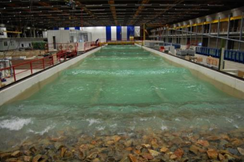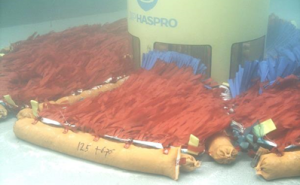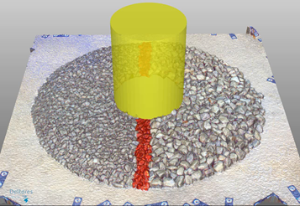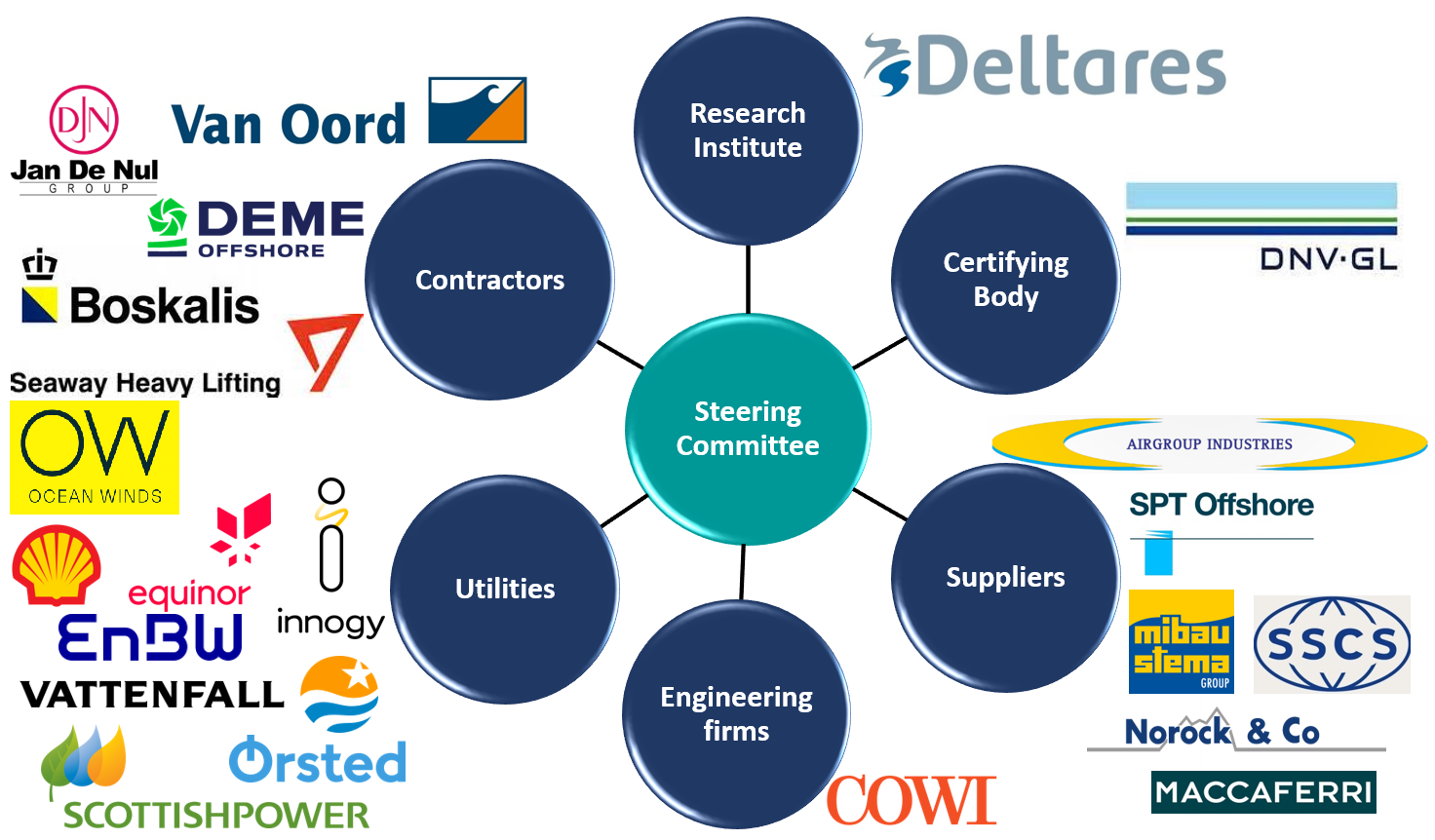Goal
Offshore structures (foundations, cables, pipelines, jacket footings) often experience scour at the interface with the seabed. The (local) erosion of sediment results in a lowering seabed level. This can -among others- result in a reduction of the lateral load capacity of foundations, free spanning of line-infrastructure and a reduction of the fatigue life (FLS). To prevent this, a scour protection is typically applied. Large cost saving can be achieved by selecting the most suitable scour protection system for each application, and/or by optimizing the scour protection design.
To that end, Deltares has teamed up with the offshore industry and certifying bodies to launch a Joint Industry Project: JIP Handbook Scour and cable PROtection (JIP HaSPro). In JIP HaSPro a generic, science-based and systematic comparison is made between different scour protection methods. This comparison is aimed at optimizing existing methods, testing new methods and providing recommendations/guidelines on when and where to apply which method. This comparison is based on an extensive model test programme performed in Deltares' facilities, the scale of which ranges from 1:50 to 1:1, including the world's largest wave flume (Delta Flume), see Figure 1.
Fig 1: Overview of hydraulic test facilities that were used in the test programmes of JIP HaSPro: (left) Scheldt Flume, (middle) Atlantic Basin; (right) Delta Flume
Scour protection methods
In JIP HaSPRo we focus on three scour protection methods (see Figure 2 for some example). First, conventional (scour protection methods consisting of loose ) rock protection methods are considered against scour for application around monopile foundations or at cable crossing failurescrossings. For these -relatively well understood methods- we aim at filling the gaps of available datasets , by testing a large range of hydrodynamic conditions as well as many different rock gradings. We conduct model tests on different scales to investigate all possible failure mechanisms of the conventional rock protection methods; we . We are focusing on external stability (movement of rock at or away from in the top layer of the scour protection), internal stability (winnowing of underlying sand through the scour protection layer) as well as flexibility in case of edge scour or a lowering ambient seabed (falling apron behavior) of loose rock scour protectionsbehaviour). Based on the extensive dataset, new scour protection design formulae can be developed.
Additionally, within the JIP HaSPro we test and assess many innovative protection methods in experimental conditions, some of them for the first time, to provide us with alternative solutions to help reduce the costs by simplifying the installation phase, facilitate monopile easier decommissioning and finally protect against scour , around infrastructure that is situated in highly dynamic environments where extreme morphological changes and hydrodynamic conditions are expected. Examples of such innovative scour protection methods are concrete block mattresses, gabions, artificial vegetation, ballast-filled mattresses and self-installable systems.
Lastly, we focus on eco-friendly scour protection methods. Nature-inclusive design of scour protections is aimed at increasing the potential ecological value that of wind farms add to marine environment, by providing shelter for target species such as Atlantic cod or by contributing to restoration of previously booming abundant oyster reefs that degraded due to human pressure and diseases, like the former Oyster Grounds in the North Sea. In Besides,in JIP HaSPro we build construct an ecological framework that accounts for the existing legislation and guidelines and provides a consolidated basis for the offshore wind industry to make choices concerning all phases of nature-inclusive design (design, construction & operation and decommissioning). Furthermore, we test the hydraulic stability and overall performance of scour protections that include ecological elements like various types of shells and constructive elements such as (modified) reefballs and pipes.
Fig 2: Examples of test set-ups of several considered scour protection methods: (from left to right) 1. selfinstallable scour protection based on artificial seaweed; 2. testing deformation of scour protections situated on top of sand wave crests; 3. eco-friendly rock berms aiming at restoration of oyster reefs; 4. 3D-measurement of rock protection in Delta Flume test, considering winnowing for two different rock gradings; 5. eco-friendly scour protection design
...
In this Joint-Industry-Project the entire value around offshore scour protections is working together to develop new knowledge and design tools. Five offshore contractors, seven major utilities, seven designers and suppliers of scour protection materials and systems are cooperating with reserach research institute Deltares and certifying body DNV GL, who together are responsible for coordination of all Work Packages; see Figure 3. Every participant has appointed a representative in the Steering Committee consists. This Joint-Industry-Project is supported by two consortia for knowledge and innovation (Topconsortia voor Kennis en Innovatie, TKI's), namely TKI-Wind op Zee (part of Topsector Energy) and TKI-Deltatechnologie (part of Topsector Water) and as such this project is (one of) the first cross-over projects between Topsector Energy and Topsector Water.
Fig 3: Overview of project structure and participants in JIP HaSPro
Main deliverables
The deliverables of the JIP HaSPro include new design formulae, an online digital handbook of best practices for scour protection design, installation, operation & maintenance, Recommended Practice by DNV GL and an engineering software design tool for the considered scour protection methods during this research project. Moreover, a large database with model test results, containing 3D-data of scour protection layouts and deformation patterns, as well as a 3D-viewer to visualize these results are included in the deliverables of this Joint Industry Project.
Fig 3: Overview of deliverables of JIP HaSPro: (left and middle) Deltares Experiment Viewer showing model test results and 3D-deformation patterns; (right) Recommended Practice by DNV GL (illustration project structure and participants in JIP HaSPro
Timeline
JIP HaSPro was initiated on 1 September 2016 and will be in progress until 1 June 2020. Results will be confidential until 1 September 2021. JIP HaSPro is still open for new participants that want to join. July 2022.
Results
Guideline: https://publications.deltares.nl/Deltares250.pdf
All data and technical reports: https://zenodo.org/records/10812205
Contact
For further information about JIP HaSPro and the possibilities to participate please contact:
Tim Raaijmakers
Yorick Broekema
Yorick.Broekema@deltaresTim.Raaijmakers@deltares.nl
+31 (0)6469111776 5209 1231













